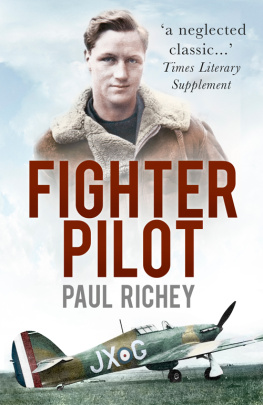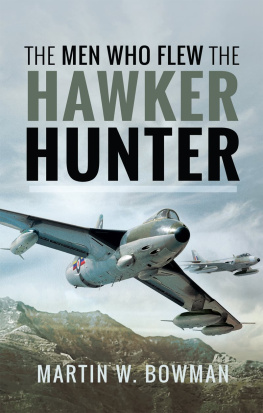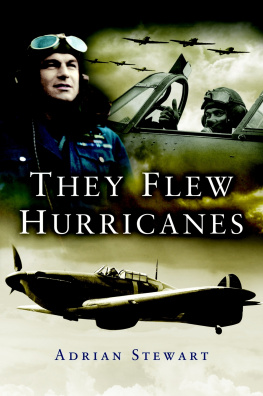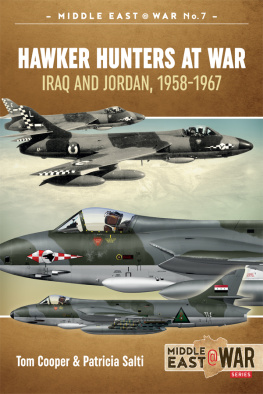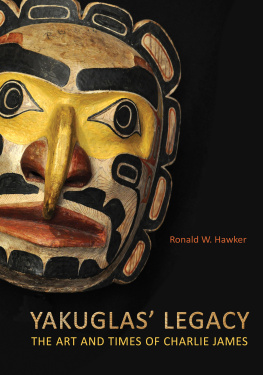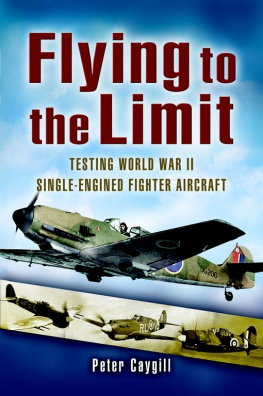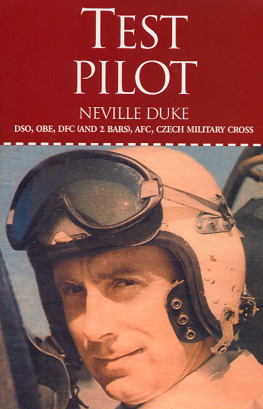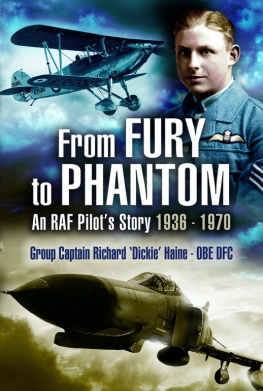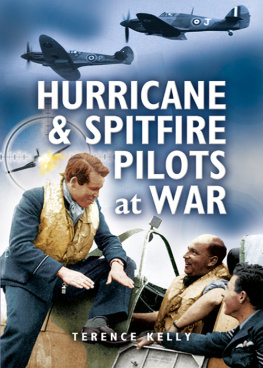TO ALL THOSE
WHO CONSTANTLY FLEW AND FOUGHT
FAR OVER THE ENEMY LINES
First published in Great Britain in 1965 by
The Mitre Press
Reprinted in this format in 2013 by
PEN & SWORD AVIATION
An imprint of
Pen & Sword Books Ltd
47 Church Street
Barnsley
South Yorkshire
S70 2AS
Copyright Tyrrel Mann Hawker, 1965, 2013
HARDBACK ISBN: 978 1 78159 345 5
PDF ISBN: 978 1 47383 080 6
EPUB ISBN: 978 1 47382 964 0
PRC ISBN: 978 1 47383 022 6
The right of Tyrrel Mann Hawker to be identified as Author
of this work has been asserted by him in accordance with
the Copyright, Designs and Patents Act 1988.
A CIP catalogue record for this book is
available from the British Library
All rights reserved. No part of this book may be reproduced or transmitted in
any form or by any means, electronic or mechanical including photocopying,
recording or by any information storage and retrieval system,
without permission from the Publisher in writing.
Printed and bound in England
By CPI Group (UK) Ltd, Croydon, CR0 4YY
Pen & Sword Books Ltd incorporates the Imprints of Pen & Sword Aviation,
Pen & Sword Family History, Pen & Sword Maritime, Pen & Sword Military,
Pen & Sword Discovery, Pen & Sword Politics, Pen & Sword Archaeology,
Pen & Sword Atlas, Wharncliffe Local History, Wharncliffe True Crime,
Wharncliffe Transport, Pen & Sword Select, Pen & Sword Military Classics,
Leo Cooper, The Praetorian Press, Claymore Press, Remember When,
Seaforth Publishing and Frontline Publishing
For a complete list of Pen & Sword titles please contact
PEN & SWORD BOOKS LIMITED
47 Church Street, Barnsley, South Yorkshire, S70 2AS, England
E-mail:
Website: www.pen-and-sword.co.uk
Foreword
by
Air Marshal Sir ROBERT SAUNDBY,
K.C.B., K.B.E., M.C., D.F.C., A.F.C., D.L.
WHEN I was posted at the age of twenty to No. 24 Squadron, in July, 1916, I did not at first realize how lucky I had been. I knew, of course, that 24 was the first squadron to be fully equipped with fighter aircraftthe famous D.H.2,and that the squadron had a very high reputation. But it was not until I met its Commanding Officer, Major Lanoe G. Hawker, V.C., D.S.O., that I understood.
Here was a leader of men who combined modesty with great courage, gentleness with a steely determination, and unselfishness with a most human understanding. At first I regarded him with an admiration and respect that amounted to awe; as I got to know him better my respect and admiration increased, but the awe diminished. It was replaced by a feeling that I can only describe as devotion.
Hawker taught me the meaning of leadership. Lord Trenchard has described him as one of the greatest war-time personalities of the Royal Flying Corps, and that is no exaggeration. In two years of war his influence on all who served with him was profound. He died young, at the height of his glory, and his death cast a shadow far and wide.
Whenever I think of him I am reminded of the tribute paid to Brutus in the closing scene of Julius Caesar:
His life was gentle, and the elements
So mixed in him that Nature might stand up,
And say to all the world, This was a man.
Introduction
by
Lieut. Col. A. M. WILKINSON, D.S.O. and bar,
Royal Air Force*
I WOULD not have believed it possible to recapture so clearly the story of Lanoe Hawkers life, just as we in No. 24 Squadron knew him; it is perfect.
The author does not overstate Hawkers real genius for leadership; he had all the qualitiesa high degree of intelligence, a great love for his fellow men, a tenderness which, like Nelsons, was almost that of a woman, combined with an implacable strength. His selflessness and his divine courage inspired his pilots and his men to achieve a standard which I venture to think was far above their normal.
He was the idol of all who knew him. Only those who worked with him, at times night and day, could really appraise his true value. Never before or since did we reach such heights of exaltation in the midst of horror and tragedy as we did in those amazing days in Hawkers Squadron. It was the happiest unit that anyone could have found in France; we were profoundly convinced that there was no other squadron in the same class, and every man thought himself extraordinarily lucky to be serving in it.
Hawkers influence spread far wider than he, or perhaps any of us, ever knew, and when they joined other squadrons his pilots took with them the Hawker spirit and the Hawker tradition.
* From the 1st April, 1918, till the 1st August, 1919, Air Force officers retained their military ranks.
Acknowledgments
I TAKE up my pen, well aware of my shortcomings as a writer, but who else could better describe my brothers life than I. with whom he spent more than half his days. I prepared the manuscript of his biography nearly thirty years ago, but for various reasons it has not been possible to publish it till now.
I have spared no pains in giving my readers a full and accurate account, and in this I have been fortunate in receiving the generous and enthusiastic help of many of his brother officers who survived the war, the permission of the Controller of Her Majestys Stationery Office and the Air Force Department of the Ministry of Defence to quote from The War in the Air, the short histories of the Squadrons in which my brother served, many other official documents, some of them in my brothers handwriting and the helpful suggestions of Mr. H. A. Jones, M.C., the official historian and his staff and the staff of the Imperial War Museum.
I also acknowledge the generous permission I have been given to use extracts from Flying Colours and No. 24 Squadron printed privately, some two hundred of my brothers letters, carefully preserved by the recipients, many photographs taken before and during the war, including several supplied by the Imperial War Museum, information gained from the official history of the war on land, Military Operations, over two hundred books on the war, including both German and French, and copies of records supplied by the Reichsarchiv. Reference is made in notes to only a few of these works for fear of distracting the reader, but many quotations from them are included in the text.*
With all this care, I still fear that this biography may fall short of conjuring up a clear enough picture of the lovable, loyal and courageous companion, whose life was cut short at the very moment when his dearest wishes appeared to be on the point of realisation, his promotion imminent and his services as a leader in the air most needed by his country.
T.H.
* To reduce the number of footnotes, references to the official history WAR IN THE AIR are shown briefly in the text, V., C., A. and p. denoting respectively Volume, Chapter, Appendix and page.
LIST OF ILLUSTRATIONS
INTRODUCTION TO 2013 EDITION
by
FLIGHT LIEUTENANT PHILIP MOBBS XXIV SQUADRON, RAF
This new edition of Lanoe Hawker VCs life is much overdue. Originally written by his brother Tyrrel Hawker and published in 1965, it has been long out of print. The rather battered copy that resides in our Squadron History Room at RAF Brize Norton was a lucky find in a second-hand bookshop in the Belgian town of Ypres.
Anyone who has witnessed the Last Post ceremony at the Menin Gate and seen the large groups of school children from many countries, including our own, will know that the events of nearly one hundred years ago still feature large in the consciousness of the nations of Europe. As we approach the centenary of the start of the Great War there will be an even greater level of interest in the events of that horrific conflict. In 2015 XXIV Squadron will also celebrate the centenary of its formation at Hounslow Heath. originally formed as a training unit preparing pilots for service in France it went on to become the first squadron in any air force to be equipped entirely with single seat fighter aircraft. It was fortunate to be commanded by Lanoe Hawker who was arguably the foremost pilot in the Royal Flying Corps at the time.


